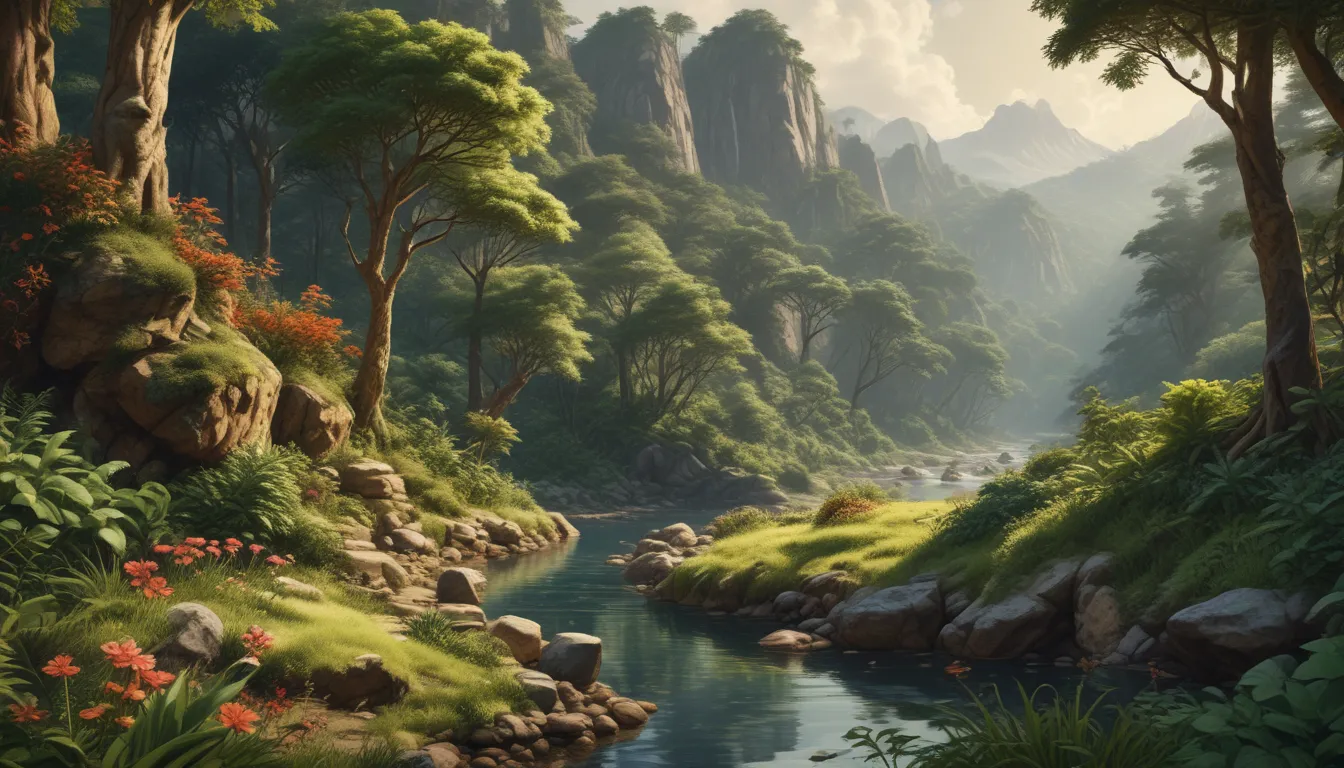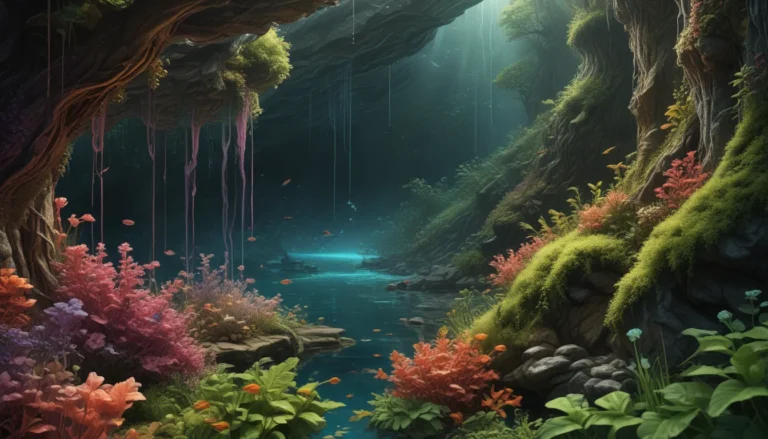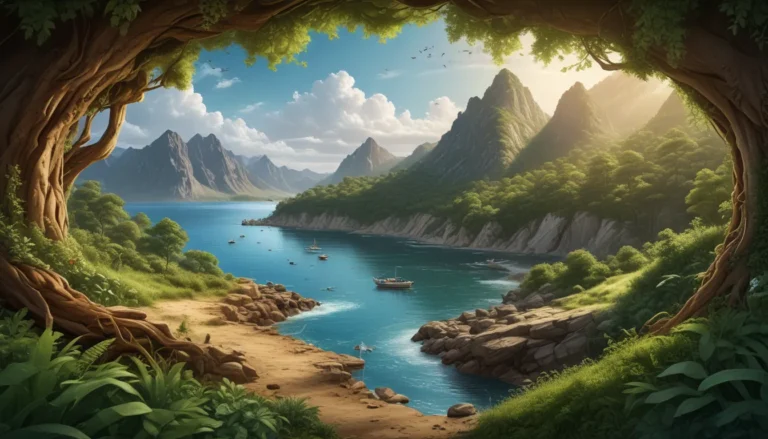A Note About Images: The images used in our articles are for illustration purposes only and may not exactly match the content. They are meant to engage readers, but the text should be relied upon for accurate information.
Biomes are vast, intricate ecosystems that blanket the Earth’s surface, each with its own distinct plants, animals, and climate patterns. These natural habitats are crucial for preserving the planet’s biodiversity, playing a significant role in sustaining our delicate ecological balance. From lush rainforests to icy tundras, each biome offers a peek into the captivating wonders of nature.
In this article, we will embark on an enlightening journey into the world of biomes, uncovering 14 fascinating facts that illuminate the diversity, resilience, and interconnectedness of these remarkable ecosystems. Let’s venture together into the hidden treasures and mysteries that make biomes an indispensable part of our planet’s ecological tapestry.
Understanding the Marvels of Biomes
-
Biomes are Diverse Habitats: Covering 30% of the Earth, biomes include lush rainforests, frozen tundras, and everything in between. Each biome sustains a unique array of plant and animal life, emphasizing the importance of understanding and protecting them for a healthy planet.
-
Threats to Biomes: Human activities like deforestation and pollution pose significant threats to biomes and their biodiversity. Conservation efforts, including reforestation and sustainable practices, are essential for safeguarding these vital ecosystems.
Delving Into the Diversity of Biomes
Classification Based on Climate and Vegetation
Biomes are classified into various types such as tundra, taiga, grasslands, tropical rainforests, and deserts based on their distinct climatic conditions and dominant vegetation. Each biome supports a plethora of life forms adapted to thrive in its specific environment.
Extent and Distribution of Biomes
Covering about 30% of the Earth’s land area, biomes can be found across different continents, ranging from the frozen landscapes of the Arctic to the vibrant greenery of the Amazon rainforest. This diversity showcases the richness of life on our planet.
Biodiversity in Tropical Rainforests
Tropical rainforests, like the Amazon and Congo rainforests, are the most biodiverse biomes on Earth. These ecosystems host an incredible variety of plant and animal species, many of which remain undiscovered by scientists.
Life in Deserts
Deserts are not barren wastelands as commonly perceived. They are home to specialized plants and animals that have adapted to survive in extreme aridity and temperature fluctuations, demonstrating the resilience of life in harsh conditions.
Exploring Unique Biomes
The Great Barrier Reef
The Great Barrier Reef, located off the coast of Australia, is the largest coral reef biome globally, spanning over 2,300 kilometers. It supports a diverse array of marine life, showcasing the beauty and complexity of underwater ecosystems.
Characteristics of Savannas
Savannas are tropical or subtropical grasslands with scattered trees, known for their vast expanses of grasses. These biomes support a variety of herbivores and predators, establishing a delicate balance in the ecosystem.
Fragility and Vitality of the Arctic Tundra
The Arctic tundra, situated in the northernmost regions of the globe, features frozen soil, low temperatures, and short growing seasons. Despite its harsh conditions, it sustains a surprising diversity of plants and animals, including iconic species like polar bears and reindeer.
African Savanna Wildlife
The African savanna is famed for its iconic wildlife, such as elephants, lions, giraffes, and zebras. This expansive grassland biome provides a conducive habitat for these majestic creatures to thrive.
The Taiga – Largest Terrestrial Biome
The taiga, also known as the boreal forest, is the largest terrestrial biome globally, extending across the northern regions of North America, Europe, and Asia. Characterized by coniferous forests and heavy snowfall in winter, it supports a unique ecosystem.
Chaparral Biome and Wildfires
The chaparral biome, found in regions with a Mediterranean climate, experiences hot, dry summers and mild, wet winters. These conditions make it prone to frequent wildfires, which play a crucial role in the renewal of its ecosystem.
Importance of Freshwater Biomes
Freshwater biomes, encompassing rivers, lakes, and wetlands, are essential for sustaining diverse life forms. They serve as habitats for numerous species, provide drinking water sources, and play a vital role in nutrient cycling.
Ocean – The Largest Biome
Covering approximately 71% of the Earth’s surface, the ocean is the largest biome, housing a myriad of organisms from plankton to whales. It plays a fundamental role in regulating the planet’s climate.
Preserving Biomes for Future Generations
Threats from Human Activities
Human actions, including deforestation, pollution, and climate change, pose significant threats to biomes globally, disrupting ecosystems and leading to biodiversity loss.
Importance of Conservation Efforts
Conservation initiatives and sustainable practices are critical for preserving the integrity of biomes and protecting the rich biodiversity they harbor. Reforestation, establishment of protected areas, and sustainable resource management are essential for ensuring the longevity of these diverse ecosystems.
Embracing the Richness of Biomes
From the frozen landscapes of the Arctic to the vibrant coral reefs, the fascinating facts about biomes showcase the immense diversity and interconnectedness of Earth’s natural habitats. Understanding and safeguarding these biomes is vital for creating a healthy and balanced planet for future generations.
Unveiling the Wonders of Nature
Exploring the captivating diversity of biomes, from the intricate adaptations in tundras to the vibrant wildlife in savannas, reveals the intricacies of the natural world. Each biome offers a unique glimpse into the beauty and complexity of ecosystems, inspiring awe and appreciation for the wonders of nature.
FAQs
-
Types of Biomes: Biomes include forests, grasslands, deserts, tundras, oceans, and freshwater ecosystems.
-
Differences Among Biomes: Biomes vary based on climate, vegetation, and the types of animals that can thrive in them.
-
Significance of Biomes: Biomes provide habitat for diverse plant and animal species, contribute to oxygen production, climate regulation, and offer essential resources for human use.
-
Impact of Human Activities: Human actions like deforestation, pollution, and climate change have detrimental effects on biomes, resulting in habitat destruction and loss of biodiversity.
-
Protecting Biomes: Protecting biomes involves practicing sustainable land use, promoting conservation efforts, supporting renewable energy sources, and raising awareness about the importance of preserving these fragile ecosystems.
Biomes are a treasure trove of wonders waiting to be explored. Each biome, with its unique characteristics and inhabitants, showcases the marvels of nature. By delving into the intricacies of these diverse ecosystems, we gain a deeper understanding of the interconnected web of life that sustains our planet. Let’s continue to cherish and protect these remarkable biomes for the well-being of future generations.
Immerse yourself in the captivating world of biomes and uncover the secrets of Earth’s most remarkable ecosystems. Explore the breathtaking diversity and interconnectedness of nature’s wonders as you embark on a journey through the fascinating facts about biomes. Start your adventure today!






